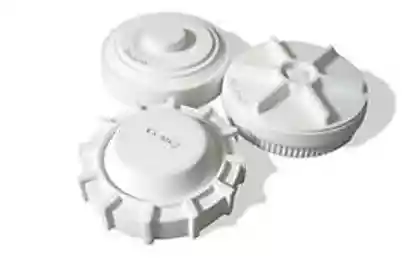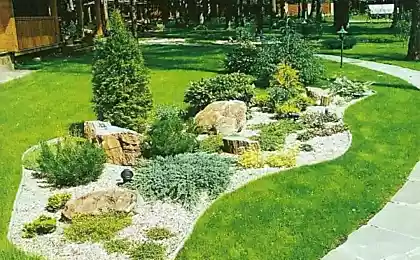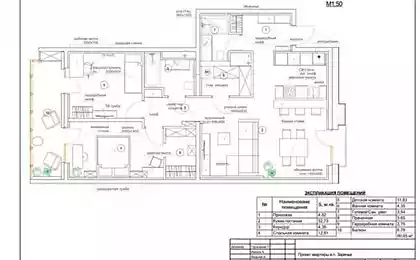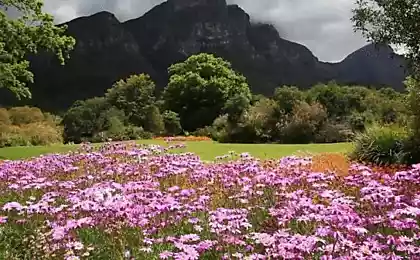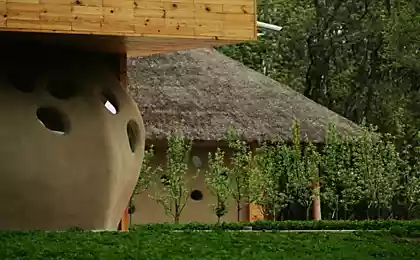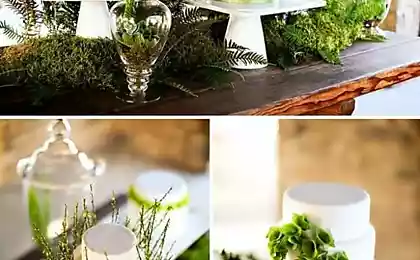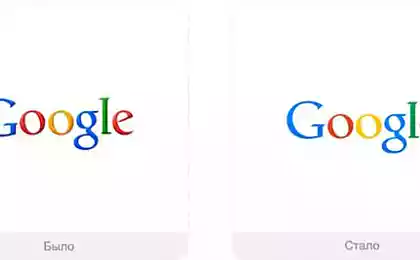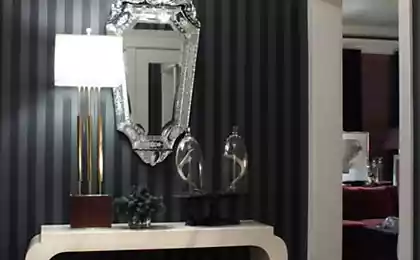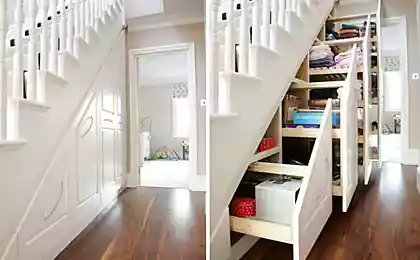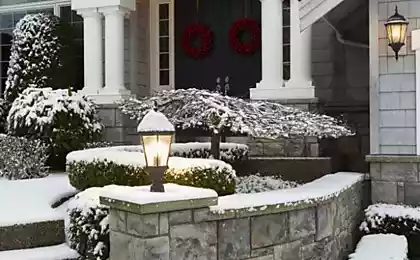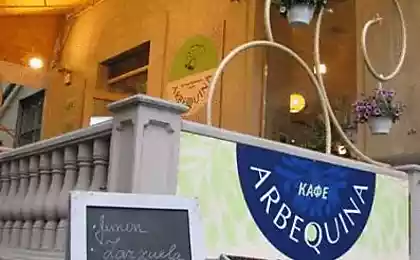268
Stylish eco garden with their own hands
Natural beauty is undoubtedly the basis for the garden, but its splendor can be emphasized by supplementing the site with interesting accessories and decorations. An important role in the design of the garden area is played by the planning of plantations, the breakdown of flower beds and flower beds, as well as the construction of natural reservoirs. Ideas about how to decorate the garden with your own hands can be born in your head or seen on the Internet, the main thing is their harmonious combination and proper implementation.
Landscape design is fully disclosed, subject to the general style of the garden. Both the general layout and combination of plant forms, and individual elements of stylistics are important. Of course, when choosing the style of the garden should be based on the size and configuration of the territory, as well as the available plantings, but the main “violin” should still play the preferences and tastes of the owner.
Psychologists say that design projects invented by people reflect the inner world and lifestyle of the authors. In order to learn how to decorate the garden, bypassing the reading of many materials, you can attract a landscape designer and try to convey your thoughts to him. Also, you can do everything yourself, armed with tips and master classes from books or the Internet. Meanwhile, the success of the case depends not only on ideas, but also on your financial and time capabilities.
The choice of those who love order in everything. Correct shapes, smooth corners, clear lines - all this is inherent in a classical garden. As a rule, trees in such areas are supplemented with flower beds of annual plants, often rectangular or round. There are also cobbled classical gardens – when flowers are planted in containers or high flower beds. One way or another, the emphasis in classical design is on vegetation.
With this style, the “highlight” of the site are flower beds and flower beds of the most bizarre forms, often forming interesting ornaments or patterns, as well as beautiful decor items towering above the ground.
The first such garden was born in the head of the owner, who loves to view his possessions from a height. In the labyrinth garden, as a rule, bushes grow abundantly in the form of hedges or corridors, neatly trimmed and forming geometric figures. The space between trees and shrubs is planted with beautiful flowers.
This design of the site is inherent in many dachas. When the territory is small, and you want to plant a lot on it, and even decorate the site - it turns out a kind of "wild" design. However, to keep the garden the title of “rural”, try to use natural materials for the paths and “old-fashioned” accessories for decoration.
There is a place to walk any fantasy! This style can be very individual. You can choose such common options as English, French, Persian, Chinese or Japanese gardens, as well as fantasize yourself, settling on the style of retro, country or marine themes.
Pay attention!
Some gardeners divide their plots into zones, each of which is different in style, sometimes dramatically. You can do the same. After choosing a style, the cost of implementing the idea should be calculated. Starting from the chosen design, you should sketch a preliminary plan. The project is based on a garden with trees growing in it. All this can be done both on the computer and on paper – who is comfortable. On the perimeter of the site should mentally place your chosen scenery and break flower beds or flower beds. For clarity, you can cut all this out of cardboard or choose colorful drawings in a special design program. If we decorate the garden with our own hands, photos of the authors of such projects posted on the Internet can help in the implementation of the idea. When it becomes clear what to do, it is necessary to calculate the amount of project costs. If it turns out that the costs are not yet affordable, you will be able to adjust everything. However, the lack of a plan and budget can lead to the fact that you have enough money to decorate only part of the garden, and even then not to the extent that you would like. The orderly implementation of the idea is the key to a successful result. A garden decoration plan will help you realize the idea and navigate the costs of the project. Garden accessories and decorations are functional and non-functional.
The former often perform a practical function. Such components can, for example, include fountains, ponds, lanterns and so on.
What main blocks can be divided into garden elements of design and decoration?
Flowers are the easiest and budgetary way to please the eye and improve your mood. With the help of flowers, you can create bizarre patterns, figures on the site, and complementing them with thematic elements of decor, even fragments from fairy tales. Choose the desired color range of plants, taking into account the features of planting care and the period of their flowering. If you do not like “capricious” plants, but love colorful flowers, make your choice in favor of asters. They do not need special care and bloom to the cold. Sometimes you need to decorate unsightly walls. For these purposes, you can plant Chinese lemongrass, honeysuckle or grapes. If the trees are planted tightly, and you will have to place the plants in the shade, stop at ferns, rhododendrons and ungulates. Plant Rudbekia or Rugoza Rose Hybrids near the reservoirs.
It's important to know! Do not forget that the basis of all plantings is the lawn.
Beautiful water always attracts attention. However, when creating water structures, it is worth considering the size of the garden, and the age of plantations, and the placement of trees, and the prevailing direction of the wind, and the shadyness of the zone, and the overall style of the site. For example, in a young garden, any pond will seem larger, and from a pond located away from the trees you do not have to catch leaves every day. Water should be built in the penumbra, then the water will remain transparent.
No matter what style and landscape you choose, the garden is sure to transform and become an extension of your personality.
Source: 101dizain.ru
Landscape design is fully disclosed, subject to the general style of the garden. Both the general layout and combination of plant forms, and individual elements of stylistics are important. Of course, when choosing the style of the garden should be based on the size and configuration of the territory, as well as the available plantings, but the main “violin” should still play the preferences and tastes of the owner.
Psychologists say that design projects invented by people reflect the inner world and lifestyle of the authors. In order to learn how to decorate the garden, bypassing the reading of many materials, you can attract a landscape designer and try to convey your thoughts to him. Also, you can do everything yourself, armed with tips and master classes from books or the Internet. Meanwhile, the success of the case depends not only on ideas, but also on your financial and time capabilities.
The choice of those who love order in everything. Correct shapes, smooth corners, clear lines - all this is inherent in a classical garden. As a rule, trees in such areas are supplemented with flower beds of annual plants, often rectangular or round. There are also cobbled classical gardens – when flowers are planted in containers or high flower beds. One way or another, the emphasis in classical design is on vegetation.
With this style, the “highlight” of the site are flower beds and flower beds of the most bizarre forms, often forming interesting ornaments or patterns, as well as beautiful decor items towering above the ground.
The first such garden was born in the head of the owner, who loves to view his possessions from a height. In the labyrinth garden, as a rule, bushes grow abundantly in the form of hedges or corridors, neatly trimmed and forming geometric figures. The space between trees and shrubs is planted with beautiful flowers.
This design of the site is inherent in many dachas. When the territory is small, and you want to plant a lot on it, and even decorate the site - it turns out a kind of "wild" design. However, to keep the garden the title of “rural”, try to use natural materials for the paths and “old-fashioned” accessories for decoration.
There is a place to walk any fantasy! This style can be very individual. You can choose such common options as English, French, Persian, Chinese or Japanese gardens, as well as fantasize yourself, settling on the style of retro, country or marine themes.
Pay attention!
Some gardeners divide their plots into zones, each of which is different in style, sometimes dramatically. You can do the same. After choosing a style, the cost of implementing the idea should be calculated. Starting from the chosen design, you should sketch a preliminary plan. The project is based on a garden with trees growing in it. All this can be done both on the computer and on paper – who is comfortable. On the perimeter of the site should mentally place your chosen scenery and break flower beds or flower beds. For clarity, you can cut all this out of cardboard or choose colorful drawings in a special design program. If we decorate the garden with our own hands, photos of the authors of such projects posted on the Internet can help in the implementation of the idea. When it becomes clear what to do, it is necessary to calculate the amount of project costs. If it turns out that the costs are not yet affordable, you will be able to adjust everything. However, the lack of a plan and budget can lead to the fact that you have enough money to decorate only part of the garden, and even then not to the extent that you would like. The orderly implementation of the idea is the key to a successful result. A garden decoration plan will help you realize the idea and navigate the costs of the project. Garden accessories and decorations are functional and non-functional.
The former often perform a practical function. Such components can, for example, include fountains, ponds, lanterns and so on.
What main blocks can be divided into garden elements of design and decoration?
- reservoirs and devices based on water supply (ponds, fountains, alpine slides);
- living elements (flowers, plants, shrubs, lawn);
- buildings and furniture (gazebos, bridge, benches, benches, chairs, tables);
- paved surfaces and paths;
- lamps and lamps;
- decorative decorations.
Flowers are the easiest and budgetary way to please the eye and improve your mood. With the help of flowers, you can create bizarre patterns, figures on the site, and complementing them with thematic elements of decor, even fragments from fairy tales. Choose the desired color range of plants, taking into account the features of planting care and the period of their flowering. If you do not like “capricious” plants, but love colorful flowers, make your choice in favor of asters. They do not need special care and bloom to the cold. Sometimes you need to decorate unsightly walls. For these purposes, you can plant Chinese lemongrass, honeysuckle or grapes. If the trees are planted tightly, and you will have to place the plants in the shade, stop at ferns, rhododendrons and ungulates. Plant Rudbekia or Rugoza Rose Hybrids near the reservoirs.
It's important to know! Do not forget that the basis of all plantings is the lawn.
Beautiful water always attracts attention. However, when creating water structures, it is worth considering the size of the garden, and the age of plantations, and the placement of trees, and the prevailing direction of the wind, and the shadyness of the zone, and the overall style of the site. For example, in a young garden, any pond will seem larger, and from a pond located away from the trees you do not have to catch leaves every day. Water should be built in the penumbra, then the water will remain transparent.
No matter what style and landscape you choose, the garden is sure to transform and become an extension of your personality.
Source: 101dizain.ru
